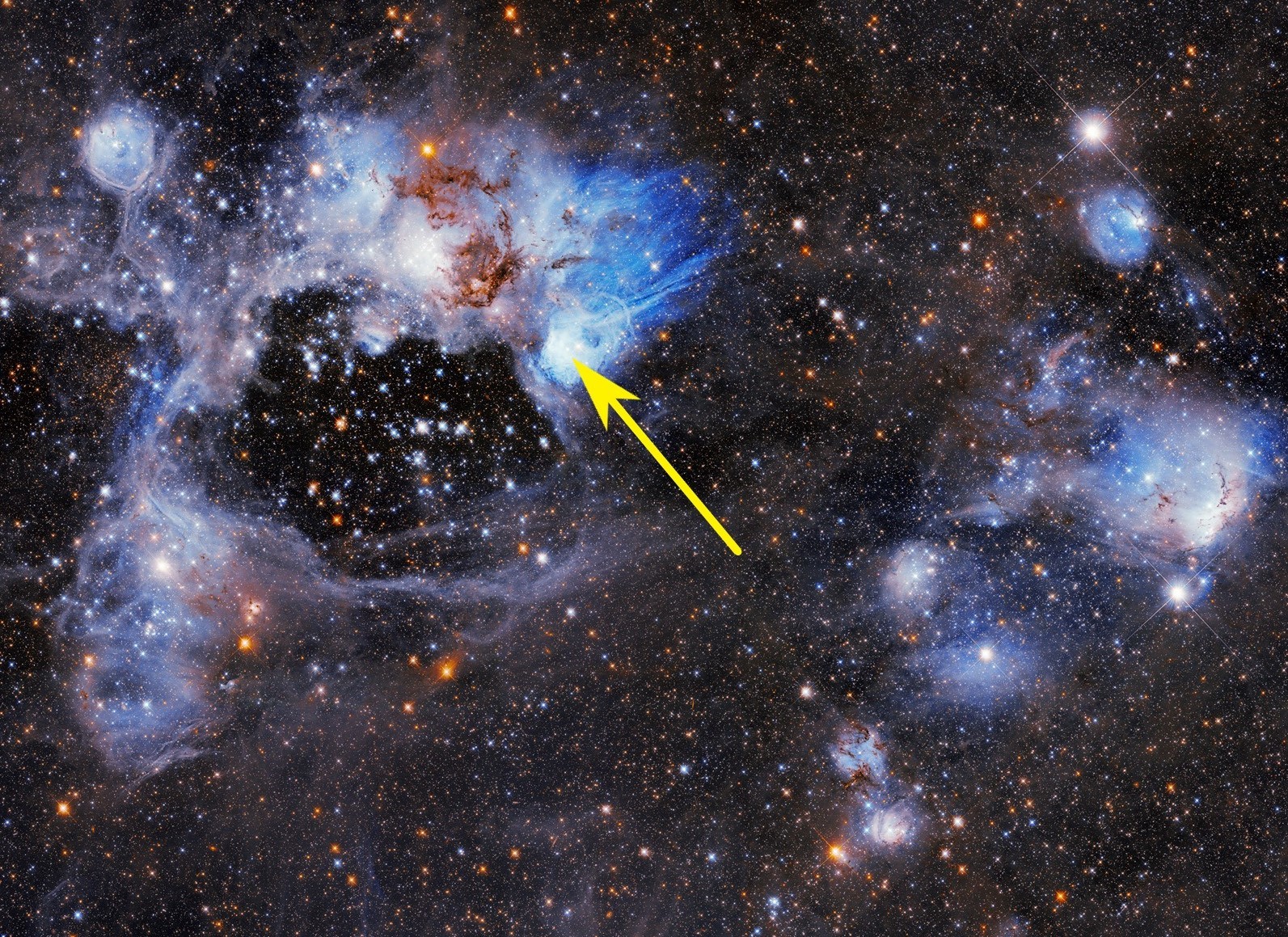Astronomy Forty-two asteroids seen like never before
Chronicles of the Cosmos A rare circumtriple planet in the head of Orion
The Hubble Space Telescope has just released a new image of the huge gas bubble known as N44 found in the Large Magellanic Cloud.
Although this structure has been known for a long time, astronomers now have a better idea of how it came to be.
In a neighboring galaxy
When we arrive in the southern hemisphere, travelers who come from the north are always ecstatic observing the two galaxies that Ferdinand Magellan described to us as 'clouds' for the first time in 1519. This was during the expedition that he
undertook with Juan Sebastián Elcano
and that would complete the first round the world.
At a distance of only about 160,000 light years, the larger of these two 'clouds', the Large Magellanic Cloud, is one of the three closest galaxies to the Milky Way. It is a barred spiral galaxy, although with a rather irregular structure. It is full of gas and dust clouds and young stars, indicating that it is going through a period of great activity in star formation. Among the nebulae that populate it, the famous Tarantula Nebula (30 Doradus) stands out, one of the
largest regions of star formation
in the local universe.
Another of the nebulae that stand out in the Large Cloud, both for its great extension and for its brightness, is known as N44.
The main characteristic of N44 is a hole that it presents inside and that has very large dimensions (about 250 light years).
It is
a large expanding bubble
that, as it grows, pushes the glowing gas from the periphery.
The
Hubble
Space
Telescope
has just released a
new image of this nebula
in which an astonishing level of detail can be seen.
The wispy clouds of bright gas (essentially hydrogen), with their highly complex and filamentary structures, completely surround the cavity in which dozens of very luminous stars can be counted.
A hollow of uncertain origin
The N44 superbubble has been known for a long time, but there are still
questions about how
such a peculiar structure
could have formed
. Astronomers have been debating, long and hard, on two possible hypotheses that could explain its origin.
The first hypothesis is based on the winds that blow the stars that remain inside the bubble. Indeed, from the atmospheres of these stars, winds blow at high speeds that, superimposed on each other, could be
capable of dragging all the bright gas that is observed around the bubble
. It is a phenomenon that can be modeled (by calculations) with relative ease and that, however, does not lead to good conclusions, since the speed that is calculated for the expansion of the bubble (from the wind speeds) is inconsistent with the observed speed.
According to a second hypothesis, it would be the explosion of a star in the form of a supernova that would have created the gigantic hole.
These explosions occur in the death of a massive star by ejection into space of material from its outermost layers.
The material expands at speeds of up to 40 million kilometers per hour and
can sweep away all the surrounding gas, thus forming the super bubble
.
This hypothesis seems, today, much more plausible.
Generations of stars
By studying the differences between the stars inside the bubble and those on the periphery, it follows that those inside are about 5 million years older.
It therefore seems that the past explosion of one (or several) of these interior stars could have caused the great cavity.
As the bubble expands, stacks and compresses the gas in the periphery and in those
dense and hot regions that are created at the edge
, optimal conditions exist for new stars to form.
Full view of N44.NASA / ESA / HST / V.
Ksoll, D. Gouliermis, G. Kober
The most intense blue region of the image accompanying this article (indicated by a yellow arrow) is
the hottest region of the nebula
with the most current star-forming activity.
The great cycle of death and genesis
The image of N44, with its complex beauty, illustrates how the death of one generation of stars leads to the birth of another generation, in a kind of chain reaction that propagates through the original interstellar cloud. During the process, the cloud is destroying itself and consuming a percentage of its material
for the formation of new stars
. When these stars age and explode as supernovae, they return part of their material to the interstellar medium, which, when compressed with the new explosions, gives rise to another generation of new stars.
This is part of the great cosmic cycle, stellar death entails a new genesis, in a succession that, however, is not infinite.
The cycle will have its limit in the depletion of hydrogen that, inside the stars, is turning into
other heavier elements through nuclear fusion reactions
.
Ultimately, the depletion of hydrogen must lead the universe to a fatal end.
But there is still a lot of hydrogen left in the universe, and there is still a long time to go to that end.
Rafael Bachiller
is director of the National Astronomical Observatory (National Geographic Institute) and academic of the Royal Academy of Doctors of Spain.
According to the criteria of The Trust Project
Know more
See links of interest
The Palm
Last News
What
2022 business calendar
Christmas Lottery 2021
Search Christmas lottery number
Holidays 2021
Loteria del Niño 2022
Cadmium algae
Real Valladolid - Fuenlabrada
Joventut de Badalona - Casademont Zaragoza
MoraBanc Andorra - UCAM Murcia
Eibar - Alcorcón
Mirandés - Huesca

